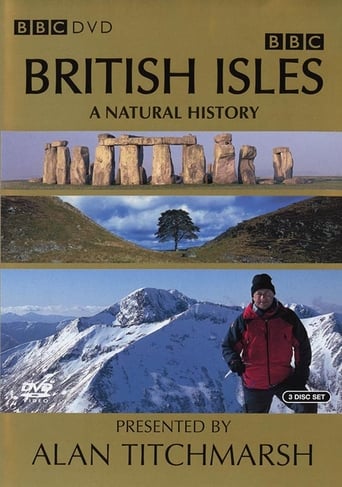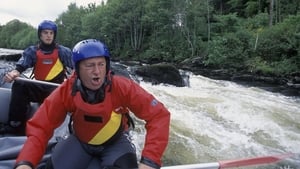
Watch British Isles: A Natural History (2004) Online!
British Isles: A Natural History is an eight-part documentary series produced by the BBC Natural History Unit and presented by Alan Titchmarsh. Originally broadcast in the UK on BBC1 from September to November 2004, it took viewers on a journey from the formation of what is now the British Isles some 3 billion years ago to the present day, revealing how natural and human forces have shaped the landscape. Each of the 50-minute episodes was followed by a 10-minute short specific to each region of the British Isles. In 2007, the BBC made a companion series about British wildlife called The Nature of Britain, also presented by Titchmarsh. A 3-disc Region 2 and 4 DVD set featuring all eight episodes was released on 29 November 2004. Titchmarsh wrote an accompanying book, also called British Isles: A Natural History, and released by BBC Books on 1 October 2004.
-

Episode 1 - 3 Billion Years in the Making
Release Date: 2004-09-29Beginning in a familiar garden setting, Alan peels back the layers of Britain's varied past. He travels to his native Yorkshire to reveal how innocent sounding place names provide evidence of a wild legacy. On Scotland's Isle of May, he discovers how white seal pups hold a clue to Britain's snowy heritage. Finally, Alan explores how diverse rock formations are a testament to Britain's turbulent past.
-

Episode 2 - Dinosaurs, Deserts and Volcanoes
Release Date: 2004-10-06From Jurassic Oxford to Scotland's Himalayas, Alan explores the secret history hidden in the rocks beneath our feet. He discovers how Scotland and England drifted together from their original locations, near the Equator and the South Pole, and finds fossils which reveal that the Yorkshire Dales was once a sea with coral reefs. The volcanic eruption which created the Giant's Causeway marked the birth of the Atlantic Ocean and the emergence of the British Isles.
-

Episode 3 - Ice Age
Release Date: 2004-10-13Alan gets under the skin of the much misunderstood Neanderthal man, examines relics from the past and discovers that an ice sheet covering most of Britain stopped at London's Finchley Road tube station. Armed with a geologist's microphone, he eavesdrops on the groans of a Norwegian glacier. In Trafalgar Square, 19th century builders found an extraordinary collection of bones, including those of hippos, hyenas and lions, demonstrating that the Ice Age was not unrelentingly cold.
-

Episode 4 - Islands Apart
Release Date: 2004-10-20Alan ventures 50 metres below the Channel, scales an ancient tree in the New Forest and stalks red deer in Scotland to tell the story of how island Britain was created. He searches for clues across the country, discovering tropical nickar nuts in Scotland, palm trees growing at latitudes where polar bears should feel more at home and watching whooper swans in Cambridgeshire who arrive from Siberia for Britain's milder winters.
-

Episode 5 - Taming the Wild
Release Date: 2004-10-27Piecing together clues from the natural and man-made landscape, Alan looks at the dramatic changes that have affected the British Isles from the Stone Age to the Industrial Revolution. The entire population of Britain could fit into a football stadium 8000 years ago. Today we probably see more people on the way to work than one of our ancestors would have seen in a lifetime. The clearing of forests for agriculture and the introduction of new species changed the landscape for ever.
-

Episode 6 - Revolution
Release Date: 2004-11-04The way of life of many animals was shaped by the industrial age. The canal network not only provided transport for bulk goods, it was also a fantastic new habitat. In Wales slate quarries, with their cliff-like ledges, provided a new home for coastal birds and falcons. London in the 1800s was the largest city in the world. Coal fires choked the city and the Victorians planted large numbers of London plane trees. They became the capital's lungs, changing the tree-scape of cities forever.
-

Episode 7 - Modern Times
Release Date: 2004-11-11Alan tracks down red squirrels in Lancashire, a rare butterfly on the Norfolk Broads and plays with high explosives on the moorlands of Northumberland to find out just how Britain's flora and fauna has adapted to the amazing transformations that have taken place over the last century. Two world wars, a rising population and huge technological developments have had a significant impact on man's relationship with the landscape.
-

Episode 8 - Our Future
Release Date: 2004-11-18A Mediterranean climate, an eternal winter or a devastating flood, Alan examines the options for the future of Britain. In the Lake District, Alan spots Wordsworth's famous daffodils blooming a month early. Leaves are falling later and migrating birds arrive earlier. But these changing temperatures are nothing new.
